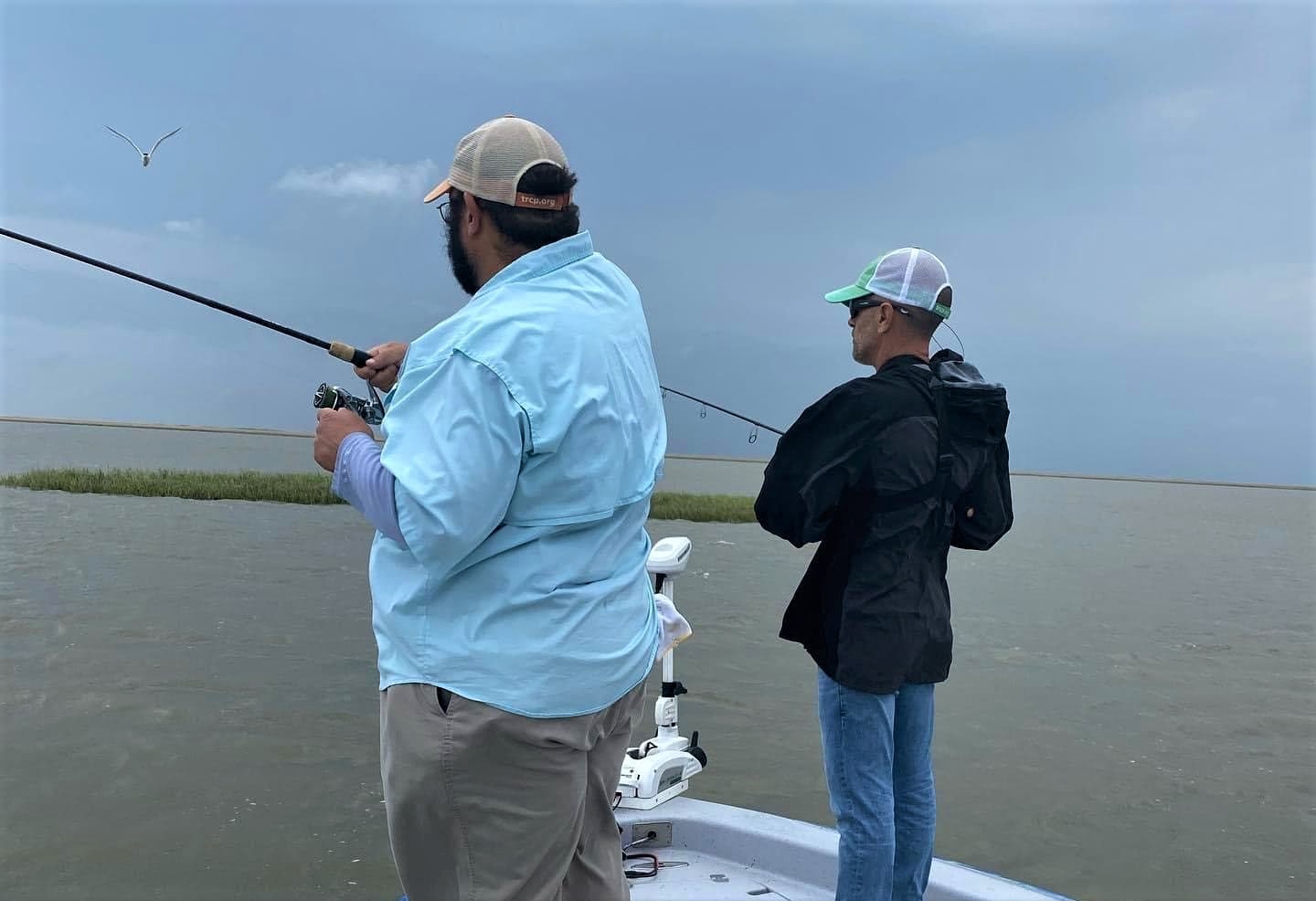Interior Department proposes another wave of expanded hunting and fishing opportunities on wildlife refuges and other public lands
UPDATE (August 30, 2021): In a press release today, the department announced that this proposed rule has been finalized in time for the 2021-2022 hunting season. The original post discusses the proposal.
Last week, the U.S. Fish and Wildlife Service announced its intention to allow hunting and fishing on an additional 2.1 million acres of land across 90 national wildlife refuges and one national fish hatchery.
This follows similar moves to expand access under the Trump Administration in 2019 and 2020, which we called out as one of the recent successes the Biden Administration could build upon to benefit sportsmen and sportswomen. According to the Fish and Wildlife Service, the expansion proposed in this rule is the largest in recent history—including last year’s, which itself was larger than the previous five rules combined.
If the rule is finalized after a public comment period, Americans will be able to hunt and fish on seven wildlife refuges previously off-limits to these activities and access new lands on another 83 refuges. Public lands in all 50 states are included in the new proposed rule, and the changes would go into effect in time for the 2021-2022 hunting seasons.
All told, the new rule would boost the total number of huntable national wildlife refuges to 434 and make fishing available on 378. The Fish and Wildlife Service is also working with states to make sure hunting and fishing regulations on federal refuges are more consistent with local laws and seasons.
Why Allow Hunting and Fishing on Refuges?
It comes as a surprise to some that hunting and fishing are allowed on refuges, which were established to conserve, restore, and enhance fish, wildlife, and their habitats. These lands, however, are not off-limits to other uses, and six wildlife-related activities are prioritized by law: hunting, fishing, photography, wildlife watching, environmental education, and interpretation.
When, where, and how hunting or fishing is allowed is dependent on several factors, and the decision to permit these activities is made on a case-by-case and unit-by-unit basis by local refuge managers and biologists. Considerations include objectives of each refuge or hatchery, its biological soundness, and the public demand for and economic feasibility of providing recreation while protecting other resources. Learn more about the history of allowing hunting and fishing on refuges here.
More Access Equals More Opportunity
“Hunters and anglers are some of our most ardent conservationists and they play an important role in ensuring the future of diverse and healthy wildlife populations,” says USFWS Principal Deputy Director Martha Williams. “Our lands have also provided a much-needed outlet to thousands during the pandemic and we hope these additional opportunities will provide a further connection with nature, recreation and enjoyment.”
Here are 26 places across six regions where this proposal may enhance your hunting and fishing opportunities by this fall.
The West
Some of the proposed changes in the West would open new opportunities for species or types of hunting that were not previously available. In Montana, for instance, both the Charles M. Russell NWR and the UL Bend NWR would allow mountain lion hunting on acres of the refuges already open to other types of hunting. Similarly, both the Las Vegas NWR in New Mexico and the Camas NWR in Idaho would allow elk hunting, which would be the first big game hunting opportunity offered by either refuge.
On the Ouray NWR in Utah, pronghorn and sandhill crane hunting would be allowed in areas already open to sportsmen and sportswomen pursuing other species. Likewise, the National Elk Refuge in Wyoming would allow deer and pronghorn hunting in areas already open to other hunts.
The Southwest
In some places, hunters would see a sea-change in opportunity. On the Muleshoe NWR in Texas, sportsmen and women will be able to hunt whitetail deer, mule deer, quail, and doves, which would amount to the refuge’s first big game, upland game, and migratory bird hunting seasons.
The Southeast
While some changes create hunting and fishing opportunities where they previously did not exist, others expand existing opportunities to a greater area of the refuge. For example, in addition to opening migratory bird hunting for the first time, changes proposed for the Mackay Island NWR in North Carolina/Virgina would also expand current opportunities for deer hunting.
Several refuges would create additional opportunities through youth-only hunts. Among those proposed in Arkansas are a youth deer hunt on the Big Lake NWR, a youth turkey hunt on the Bald Knob NWR, and youth hunts for deer, rabbits, and squirrels on the Holla Bend NWR.
Anglers in the region would for the first time get to enjoy sportfishing on the Grand Bay NWR, which straddles Alabama-Mississippi border, and the Florida Panther NWR in Florida, while waterfowlers in Alabama would see the first-ever duck and goose hunting season on the Choctaw NWR.
The Mid-Atlantic
Both the Great Swamp NWR and the Supawna Meadows NWR in New Jersey could offer new opportunities to hunt, among other species, turkeys, and both could also expand existing deer hunting opportunities.
In Virginia, the proposed rule would open migratory bird hunting, upland game hunting, and sportfishing for the first time at the Eastern Shore of Virginia NWR, while also expanding existing opportunities there for whitetail hunting. The Great Dismal Swamp NWR, James River NWR, Occoquan Bay NWR, Prequile NWR, and Rappahannock River Valley NWR would all allow turkey and coyote hunting for the first time, among other opportunities.
The Midwest
In Michigan, the Harbor Island NWR would allow migratory bird hunting, upland game hunting, and sportfishing for the first time, while also expanding current opportunities for deer hunting and bear hunting to additional acreage within the refuge.
The Northeast
In Maine, waterfowl hunters would enjoy the first-ever migratory bird hunting opportunities at the Franklin Island NWR and the Pond Island NWR, which also extends into New Hampshire. Likewise, anglers would for the first time be able to fish at the Pine Tree State’s Green Lake National Fish Hatchery.
A complete list of the proposed changes to hunting and fishing access can be found here.
Top photo by Wyman Meinzer/U.S. Fish and Wildlife Service via flickr.






This is an absolute horrendous decision! For entertainment those who are bored with life are allowed to kill in few places that serve as a refuge for wild life! Where are your priorities? Hundreds of species dissappear every second from the face of the earth and you encourage the remaining species to diminish in number. Because some people want to kill. Just insane.
These refuges were created to provide a safe place for the animals to live freely without fear of being killed. There is a law protecting migratory birds that should stay intact. This announcement left me in tears. What has happened to compassion towards animals in the U.S? Please don’t let this happen. Hunters have enough land available for them to kill our magnificent animals.
No. No. No. this sucks
Hunting and fishing on a wildlife refuge this is totally horrible.
Wildlife was supposed to be protected!!!!!
Now it is ok to go into their homes and just kill them? Right?
As far as I am concerned Teddy Roosevelt was not caring one bit about wildlife.
Wow, wildlife should be protected and not murdered for sport.
The beautiful deer, elk, moose, bears, wild turkeys etc. should be allowed to live out their life!
Imagine someone coming into your home where you live to kill you just for the fun of it!
This is truly unbelievable bad news for wildlife!
First all you have to have respect for all animals.
I don’t know how a person can sleep at night, knowing that they just killed a graceful deer or elk.